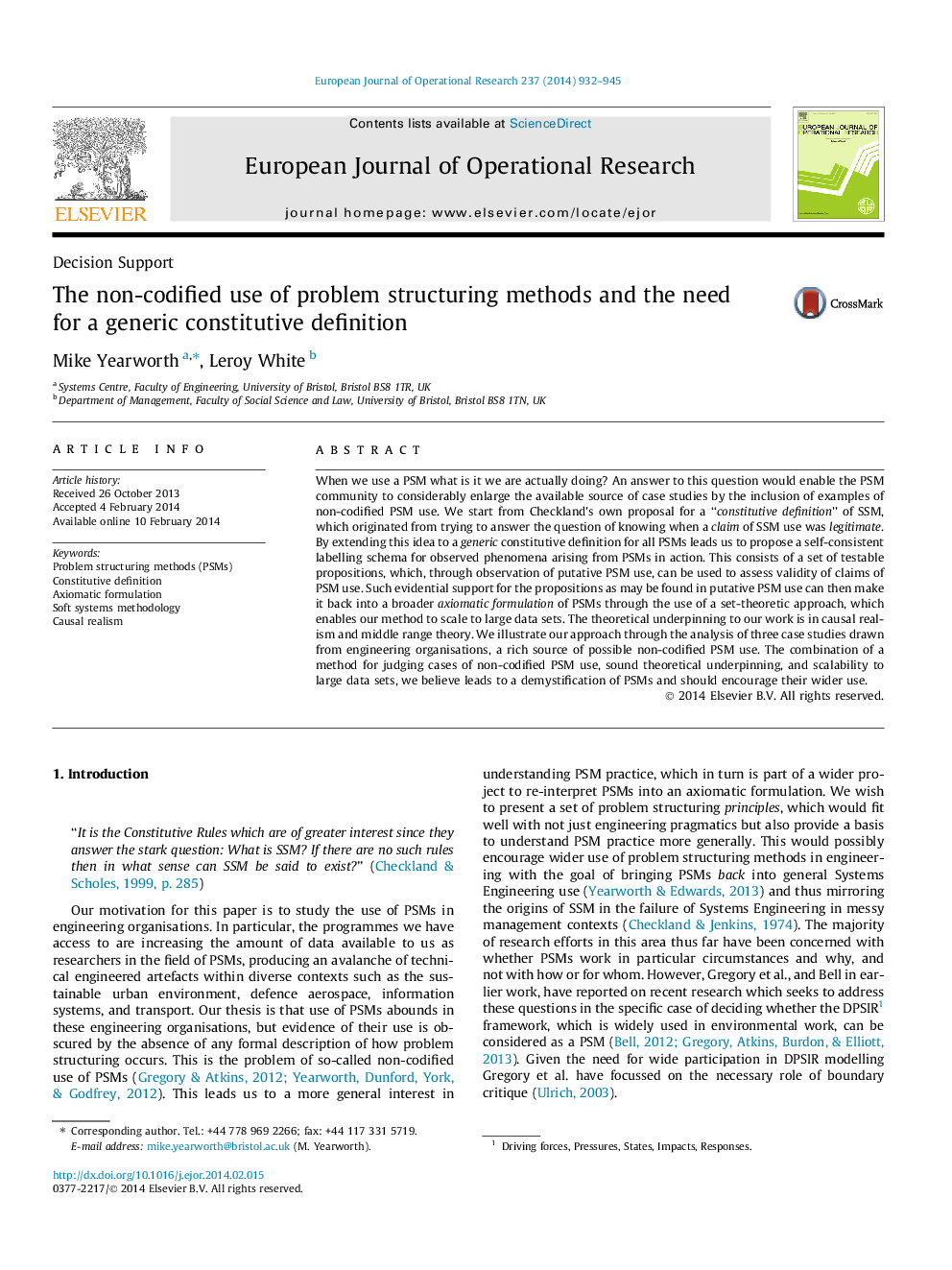| Article ID | Journal | Published Year | Pages | File Type |
|---|---|---|---|---|
| 479719 | European Journal of Operational Research | 2014 | 14 Pages |
•An approach to demystifying PSMs using a generic constitutive definition.•Theoretical underpinning in causal realism.•Method for evaluating claims of non-codified PSM use.•Method implemented as a set of testable propositions about PSM practice.•Method enables analysis over large numbers of cases of PSM use.
When we use a PSM what is it we are actually doing? An answer to this question would enable the PSM community to considerably enlarge the available source of case studies by the inclusion of examples of non-codified PSM use. We start from Checkland’s own proposal for a “constitutive definition” of SSM, which originated from trying to answer the question of knowing when a claim of SSM use was legitimate. By extending this idea to a generic constitutive definition for all PSMs leads us to propose a self-consistent labelling schema for observed phenomena arising from PSMs in action. This consists of a set of testable propositions, which, through observation of putative PSM use, can be used to assess validity of claims of PSM use. Such evidential support for the propositions as may be found in putative PSM use can then make it back into a broader axiomatic formulation of PSMs through the use of a set-theoretic approach, which enables our method to scale to large data sets. The theoretical underpinning to our work is in causal realism and middle range theory. We illustrate our approach through the analysis of three case studies drawn from engineering organisations, a rich source of possible non-codified PSM use. The combination of a method for judging cases of non-codified PSM use, sound theoretical underpinning, and scalability to large data sets, we believe leads to a demystification of PSMs and should encourage their wider use.
